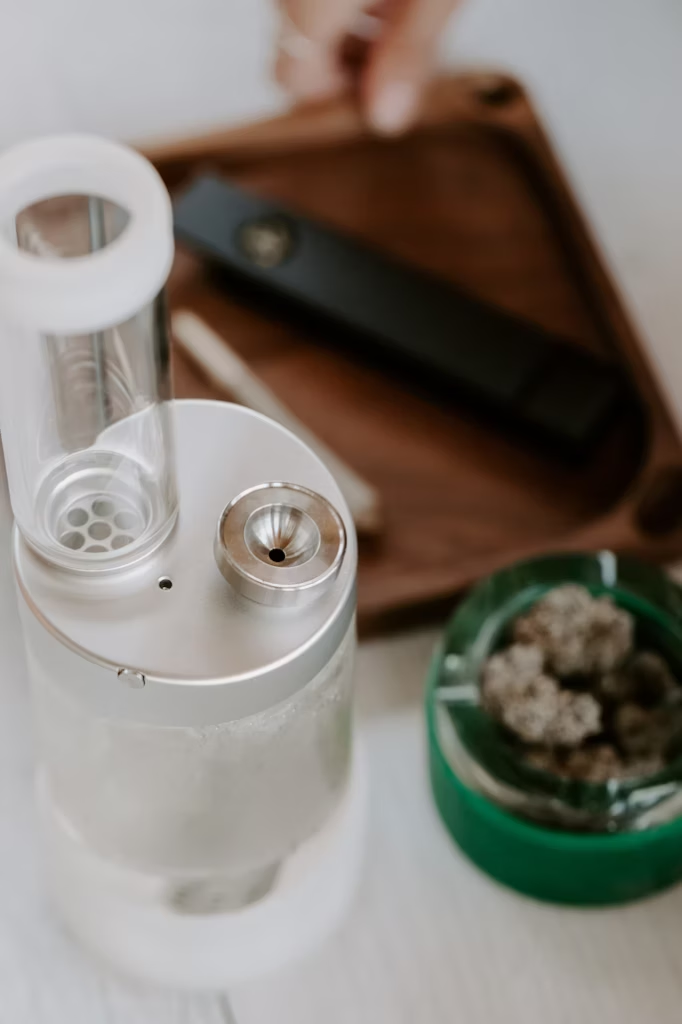As more states progressively legalize cannabis for medical or recreational use (and the pandemic continues to mandate stay-at-home restrictions), the U.S. has seen a major surge in cannabis sales this year. With a growing community of cannabis enthusiasts across the country, the popular plant is popping up in our literature, social media, entertainment, and food. And whether you’re a seasoned expert or curious novice, it helps to know the science behind cannabis so you can choose the best strains and product types for your needs. A good place to start is understanding the chemical constituents of the cannabis plant.

First, What Are Cannabinoids?
The cannabis plant is comprised of compounds called cannabinoids, the most well-known among consumers THC (a psychoactive compound, which gives you a “stoned” sensation) and CBD (a non-psychoactive compound, with no “stoned” sensation). The cannabis plant itself doesn’t produce CBD and THC – the plant synthesizes several cannabinoid acids, which have to be “activated” through heat in order to create those beloved cannabinoids. Though the cannabis plant contains hundreds of compounds, only dozens are technically defined as cannabinoids besides THC and CBD, which are differentiated by their level of psycho-activity.
What Are Terpenes?
Terpenes, on the other hand, are hydrocarbon compounds that give many plants and herbs their aromatic characteristics, like rosemary, lavender, thyme, and sage, as well as citrus. (Have you ever enjoyed the scent of essential oils? That’s terpenes working their magic.) In nature, terpenes offer protection from bacteria and fungus. With cannabis, terpenes are formed inside the trichomes, and over 100 types have been identified within the cannabis plant.
Terpenes also contribute to the “entourage effect,” a theory that indicates when all three compounds (cannabinoids, terpenes, and flavonoids) are present, they work synergistically to produce optimal effects. Full-spectrum cannabis contains all three compounds. Although the names are sometimes used interchangeably, terpenes and terpenoids are different. Terpenes occur naturally in a living plant, while terpenoids are formed as the plant is dried and cured, and the terpenes become oxidized.
While your method of cannabis delivery is a personal choice (inhalation, oral, topical), vaporization is a favored approach for its ability to preserve the integrity of terpenes. Vaporizing warms the cannabis flower to a predetermined temperature, instead of quickly burning and combusting the flower, like smoking. Vaporization allows for temperature adjustments that can enhance the effects of cannabinoids and terpenes.
Common Terpenes and Their Benefits
In addition to giving cannabis strains their signature aromas, terpenes may also offer potential health benefits for certain afflictions.
- Myrcene: the most prevalent terpene in cannabis, myrcene offers earthy, fruit-like aromas, and is naturally found in cloves, thyme, and lemongrass. Myrcene is associated with having a sedative effect, making it potentially helpful in reducing pain or inflammation.
- Limonene: the second most abundant terpene in cannabis, limonene offers a bright, citrus scent and occurs naturally in lemons, limes, and oranges. Limonene is said to potentially reduce stress and contain antibacterial properties.
- Linalool: with a light, floral odor, linalool is present in cinnamon, lavender, and coriander. It’s also thought to be the most responsible for the potent scent of cannabis, and may contain sedative and relaxing properties to help with depression, insomnia, anxiety, and arthritis.
- Terpinolene: found in many cannabis strains (but typically in smaller quantities), terpinolene has a piney, woodsy scent with floral undertones, and is purported to contain antibacterial, antioxidant and sedating effects.
- Beta-Caryophyllene: giving off spicy and peppery notes, beta-caryophyllene occurs in cinnamon, cloves, rosemary, and oregano, and is said to exhibit antioxidant and anti-anxiety properties.
- Alpha-Pinene: the terpene that gives pine trees their recognizable aroma, alpha-pinene is also found in rosemary, sage, and basil. It contains anti-inflammatory properties, and may help with gastrointestinal afflictions.
Effects of Terpenes vs. Cannabinoids
Although further research is needed to fully comprehend the effects of terpenes and cannabinoids, we know that cannabinoids affect the endocannabinoid system by activating cannabinoid type 1 (CB1) receptors on cell surfaces, creating the “high” feeling from THC. While CBD acts on the same receptors, it does not induce the same sensation, as it blocks any intoxicating effects from CB1 receptors. Terpenes also interact with the endocannabinoid system, but their effects are far more powerful when paired with other cannabinoids (the “entourage effect”), as opposed to consuming terpenes on their own through other plants or fruit.
The more you understand terpenes and cannabinoids, the more you can enhance your cannabis experience. By learning how to use terpenes to your advantage and experimenting with varied profiles, you can effectively select which cannabis strains are best for you and your individual needs.
Biography
Kimberly Tronic is an author, copywriter and content creator. She enjoys coffee, cleaning her apartment, cats, and nibbling on pencils.
References:
- https://www.prnewswire.com/news-releases/us-retail-cannabis-sales-on-pace-to-rise-40-in-2020-near-37-billion-by-2024-301174282.html
- https://cannabisgenomics.org/blog/2019/03/activating-cannabinoids-how-heat-makes-cannabis-psychoactive
- https://www.cannabistech.com/articles/what-is-the-entourage-effect-in-cannabis/
- https://www.news-medical.net/health/What-are-Cannabinoids.aspx
- https://www.healthline.com/health/does-cbd-get-you-high#thc















